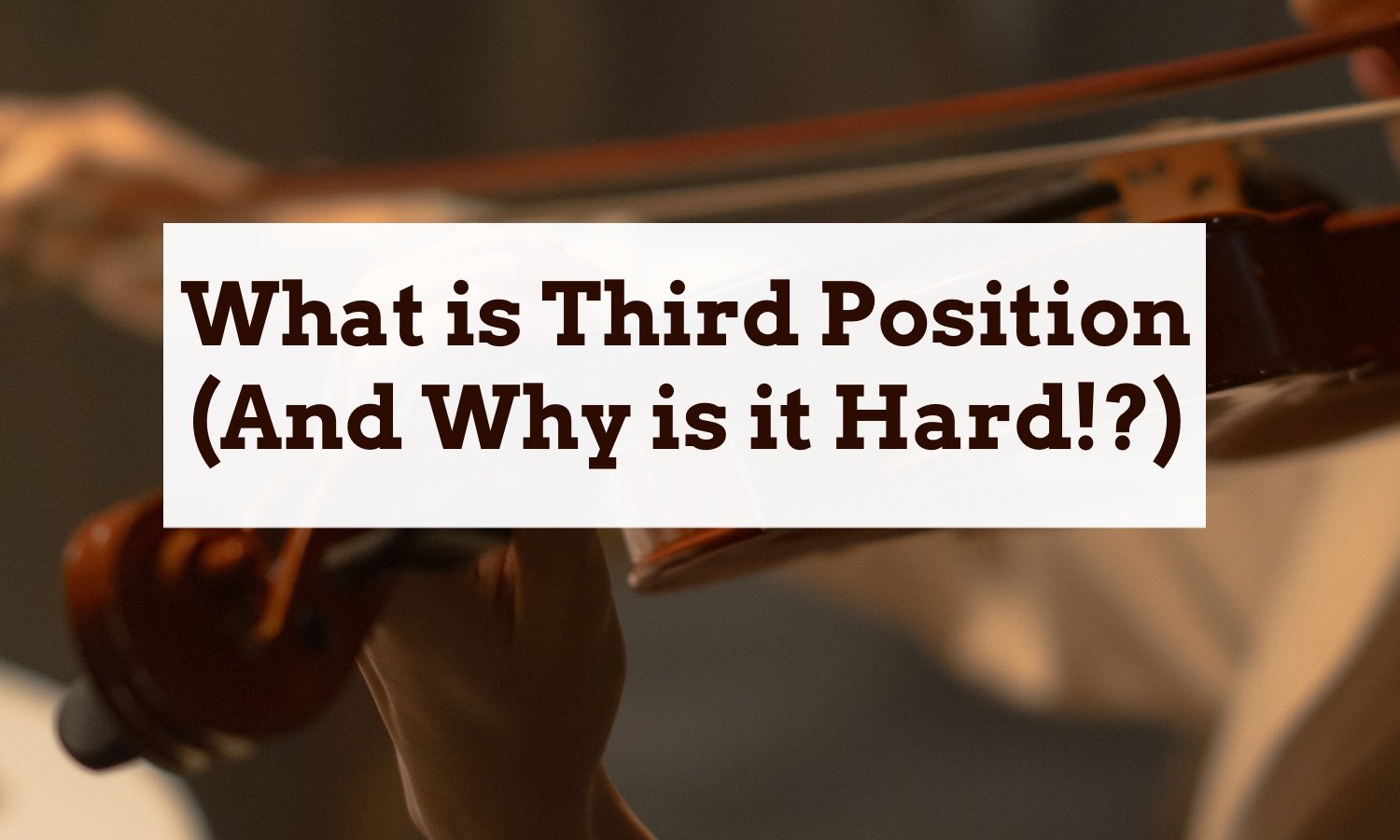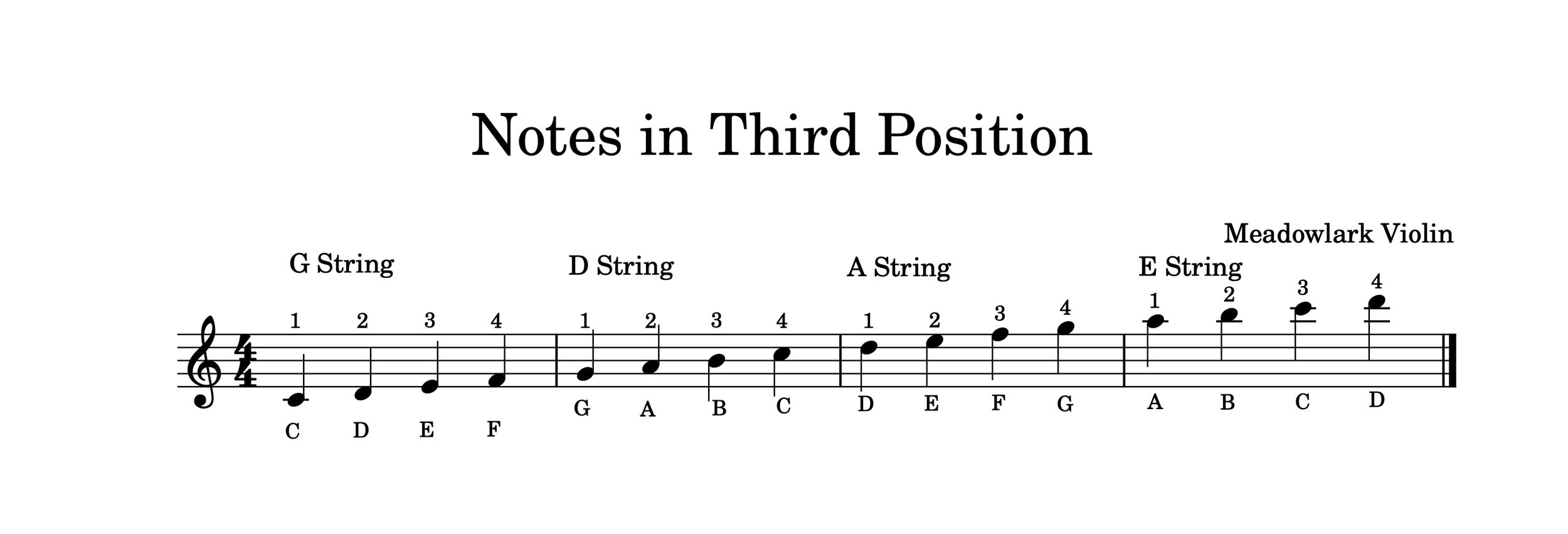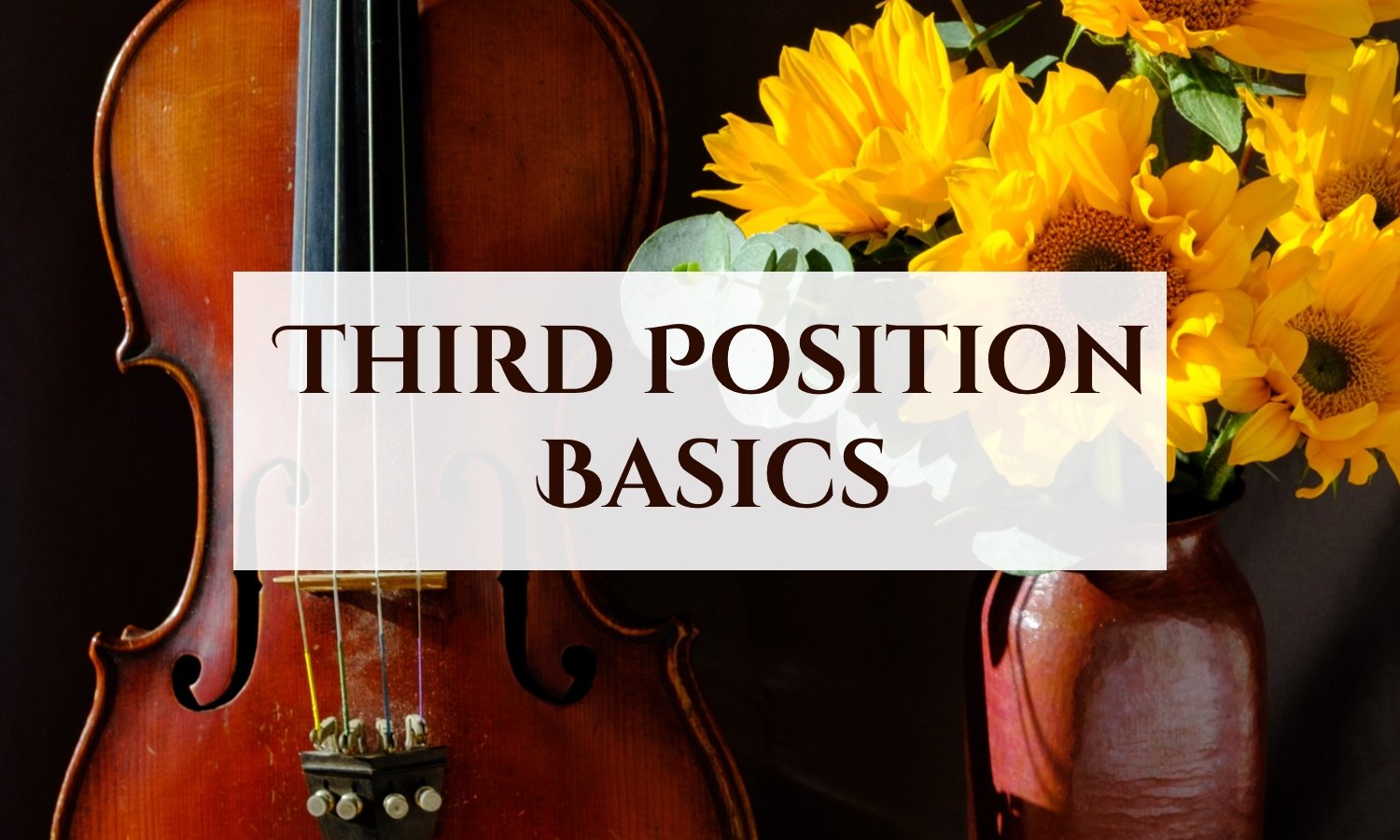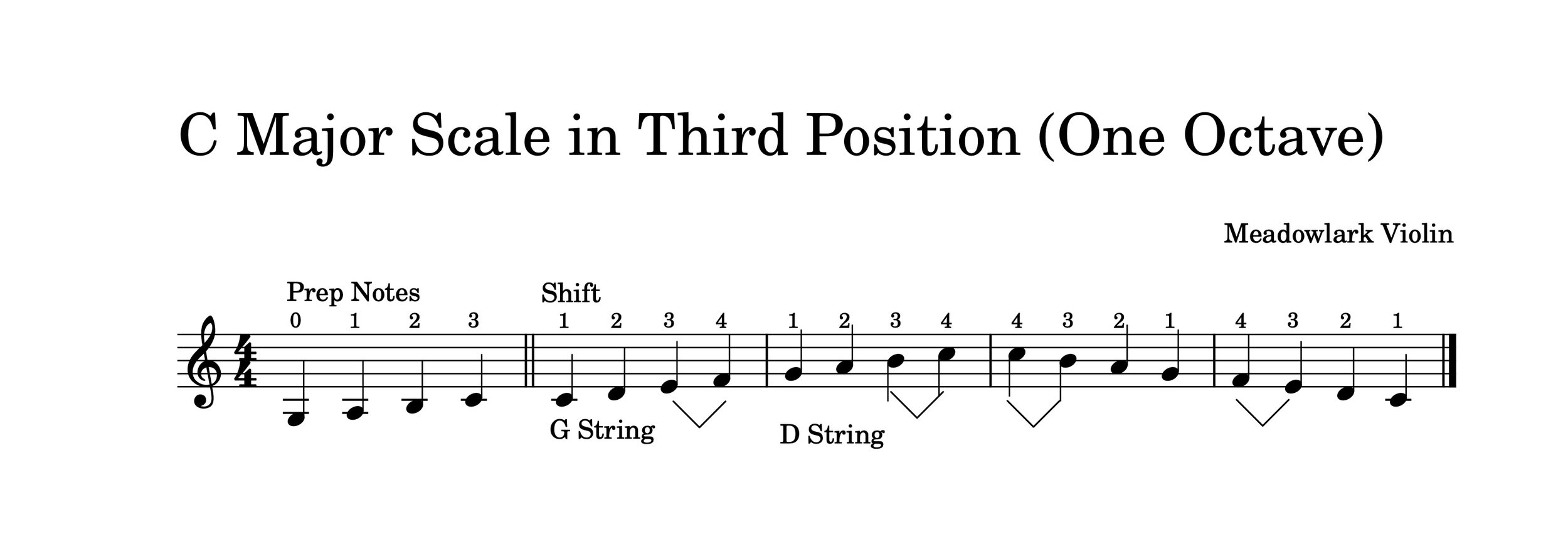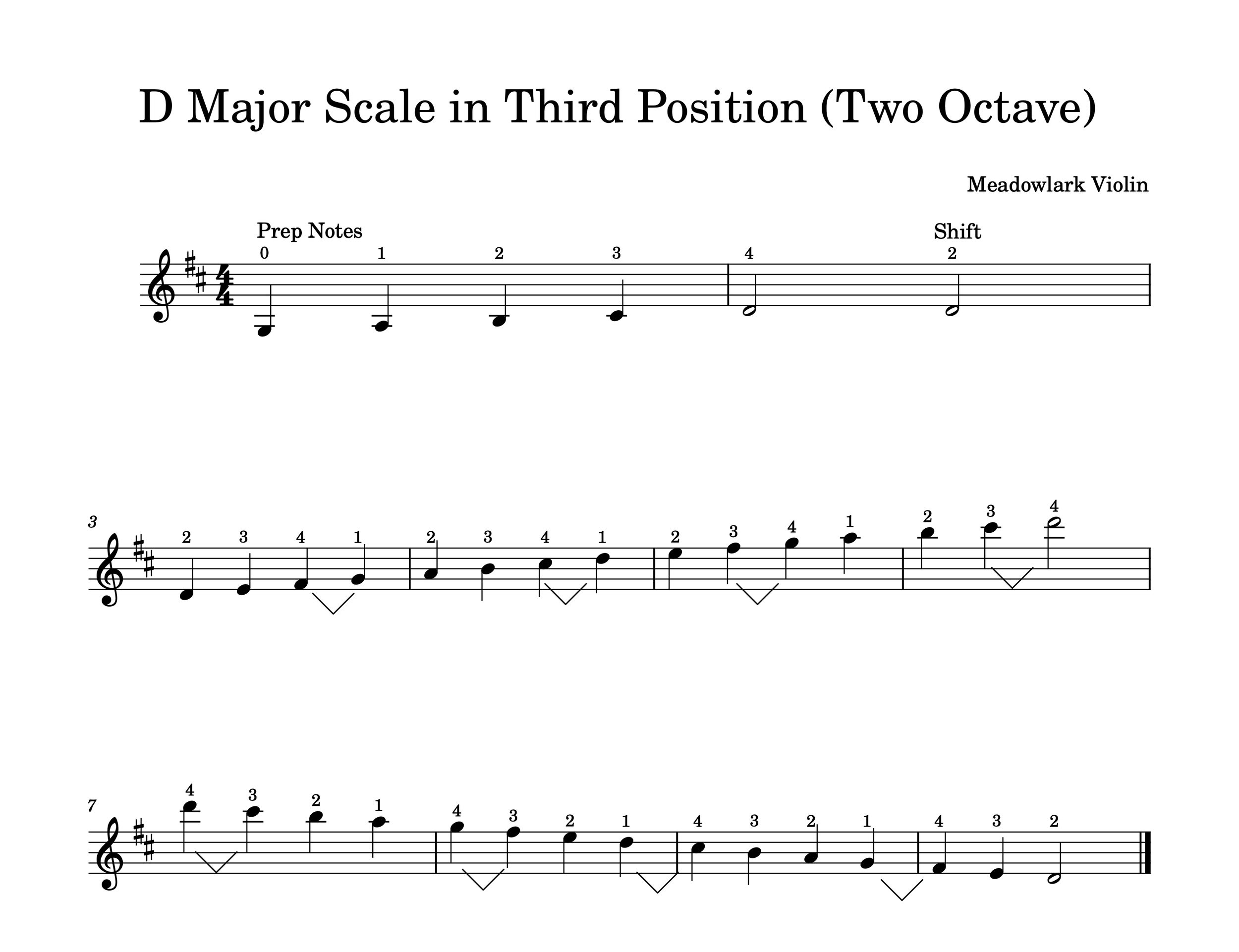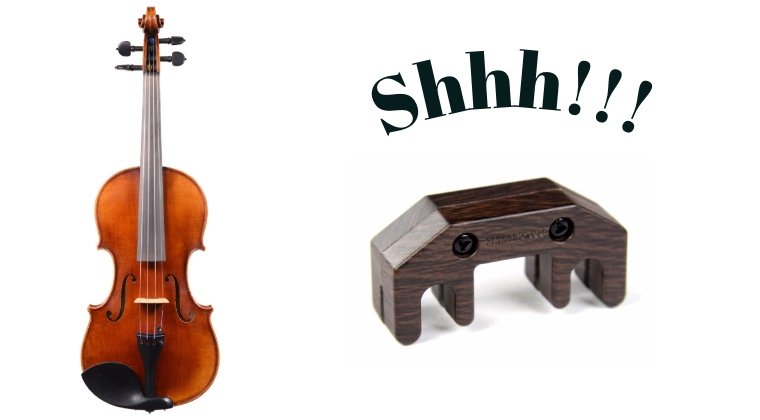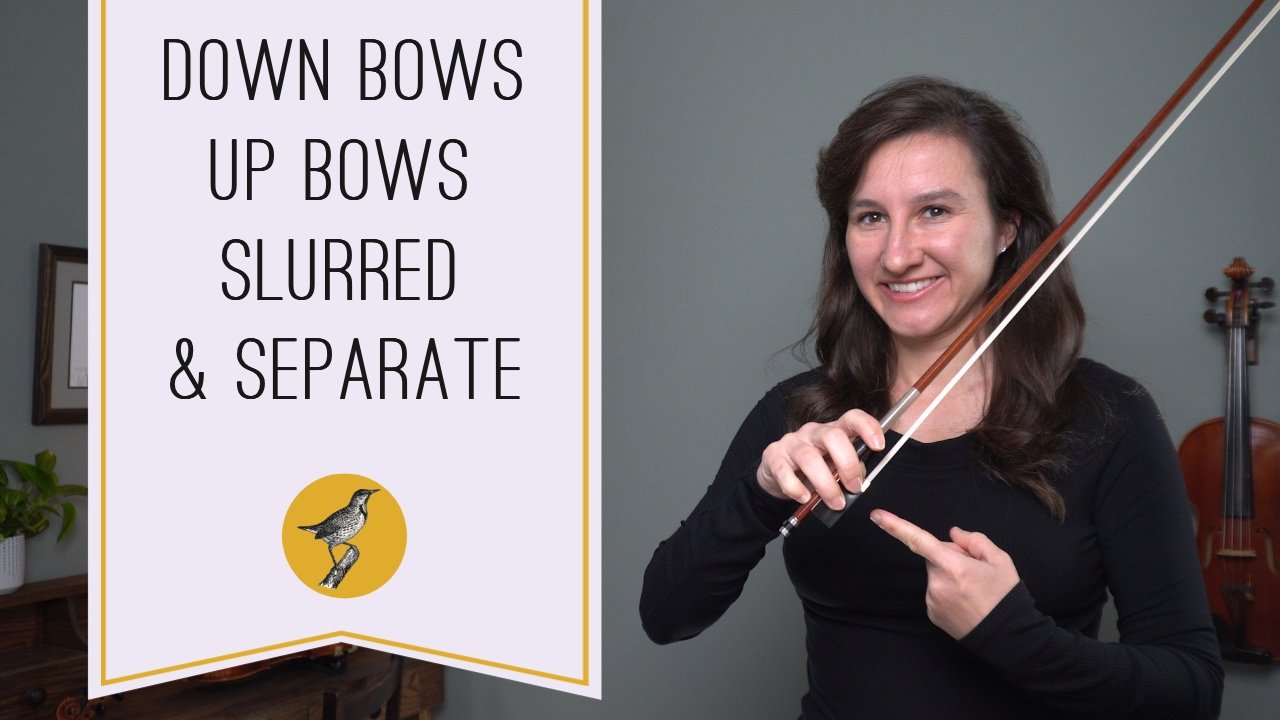What is Third Position on the Violin (And Why is it Hard!?)
/What is third position on the violin? What do we gain by learning a new position? Why do we learn third position after first position? What are the notes in third position? And most importantly, why is learning third position so hard?
These may be some of your questions as you’re getting ready to learn third position on the violin. I remember learning third position turned my world upside down and I’ve heard similar stories from other professional violinists. For a longtime I watched my own private students struggle with learning third position. Then I finally realized the problem wasn’t with third position, but with the way we teach it!
Traditionally, we teachers plop a third position book up on the music stand and watch our students slog joylessly through reading music in third position. The reason third position is so hard is because students have never been taught to understand and speak the language of the violin.
Let me explain. I took a couple Spanish courses in college. I learned to parrot back a couple phrases. To this day, I sing a little ditty I learned titled, “Me gusta la leche, me gusta cafe.” Now I can say a couple things in Spanish. At one point I might have even convinced a few non-Spanish speakers that I could speak the language. But did I actually known and understand Spanish? NO! All I could do was repeat phrases I had learned. That’s not knowing a language in my opinion. But unfortunately, we violin teachers teach violin in the same way.
We teach you to memorize little things. “Play a high 2nd finger on this string, but not on that string. Just remember when you see this key signature you have to do it that way. Don’t ask why. There’s not enough time to explain.”
So when you get to third position, no wonder it’s so confusing! You’ve never learned the basic rules of the language and when you throw in an advanced concept, your world falls apart.
My method of teaching third position is completely different. I teach you the language of the violin through ear training and music theory so third position makes sense. If you want the real third position experience, check out my course on Mastering Third Position Basics (you’ll get the entire course as part of my Online Membership).
For now, let’s talk through these questions about third position.
What is Third Position on the Violin?
Simply put, if you put your first finger where your second finger normally goes in first position, you’re in Second Position. Now go back to first position. If you put your first finger where your third finger goes, now you’re in third position. The first finger in third position on the G string is on the C note, on the D string first finger is G, A string first finger is D, E string first finger is A.
Every time you change to a higher position, you gain one new note that you didn’t have in the lower position. You also lose a note on the lower end as well.
When Should I Learn Third Position?
You should wait to learn third position until you are pretty comfortable in first position. Once you can play all of the notes in first position with pretty good intonation and muscle memory, you’re probably ready to start learning third position. However, I think it’s very important to experiment during your practicing. Experimenting means not knowing what the outcome will be, so you can’t beat yourself up if the outcome wasn’t what you expected. It’s very important to experiment with the violin during your playing. You’ll discover so much about your violin by just “playing around.” So if you want to experiment playing in third position even if you are fairly new to the violin, I say go for it.
How Do I Get Ready for Third Position?
Well, I’ve got 7 tips for making sure your set-up and violin hold is ready for third position. You can watch the video here.
What are the Notes in Third Position on the Violin?
Here are the notes in third position for each string. You’ll notice you gain a high C and D on the E string. These are notes you didn’t have in first position. But you also lost the low A and the low B on the G string.
Why Do We Learn Third Position Before Second Position?
Certain key signatures fit well with certain position. In first position, you probably learned D, A, or G major first. Trickier keys in first position are B Flat, F Major, E Major, etc. These are tricky because they involve “low 1s” or “high 3s,” notes that don’t fit in that normal finger pattern.
Every position has keys that fit will in that position. Third position tends to favor the same key signatures in first position, and therefore, favors keys that are very popular on the violin. Second position however, favors B flat, F major, etc. So when you’re learning your first higher position on the violin, it’s best to learn one that favors keys you are already very comfortable with.
Another reason we teach third position before second position is because third position can feel more comfortable and stabilizing since your palm will be touching the actual body of the violin (with most hand shapes). In second position, your hand just feels like it’s floating out there in outer space. There’s not a lot of physical cues to help you know where you are.
How Do I Play In Third Position?
To get up to third position on the violin, you need to start in first position. It’s very important to prep third position. Play 0-1-2-3 in first position on any string. Make sure your third finger is very in tune (hint: ring tones!)
Now replace your third finger with your first finger. Or move your hand so your first finger is playing the exact same note you were playing in first position. Ta-da! You’re in third position. Yep, it’s that easy. However, it does take a LOT of practicing and muscle memory and ear training to get that transition really smooth and seamless. Don’t worry, I cover these topics in depth in my Third Position Course.
Scales in Third Position
Before you learn scales in third position, it’s very important to learn the universal scale pattern for the violin. Once you learn this pattern, playing scales in third position will be so much easier. Watch the video below to learn about the universal scale pattern. I think you’ll be surprised how easy it can be to play in higher positions when you aren’t worrying about READING music.
If you are ready for more easy scales in third position, learn more here.
Ready to Master Third Position Basics?
Learning third position shouldn’t be a struggle. Let me show you how easy it can be! Click below to learn more.


